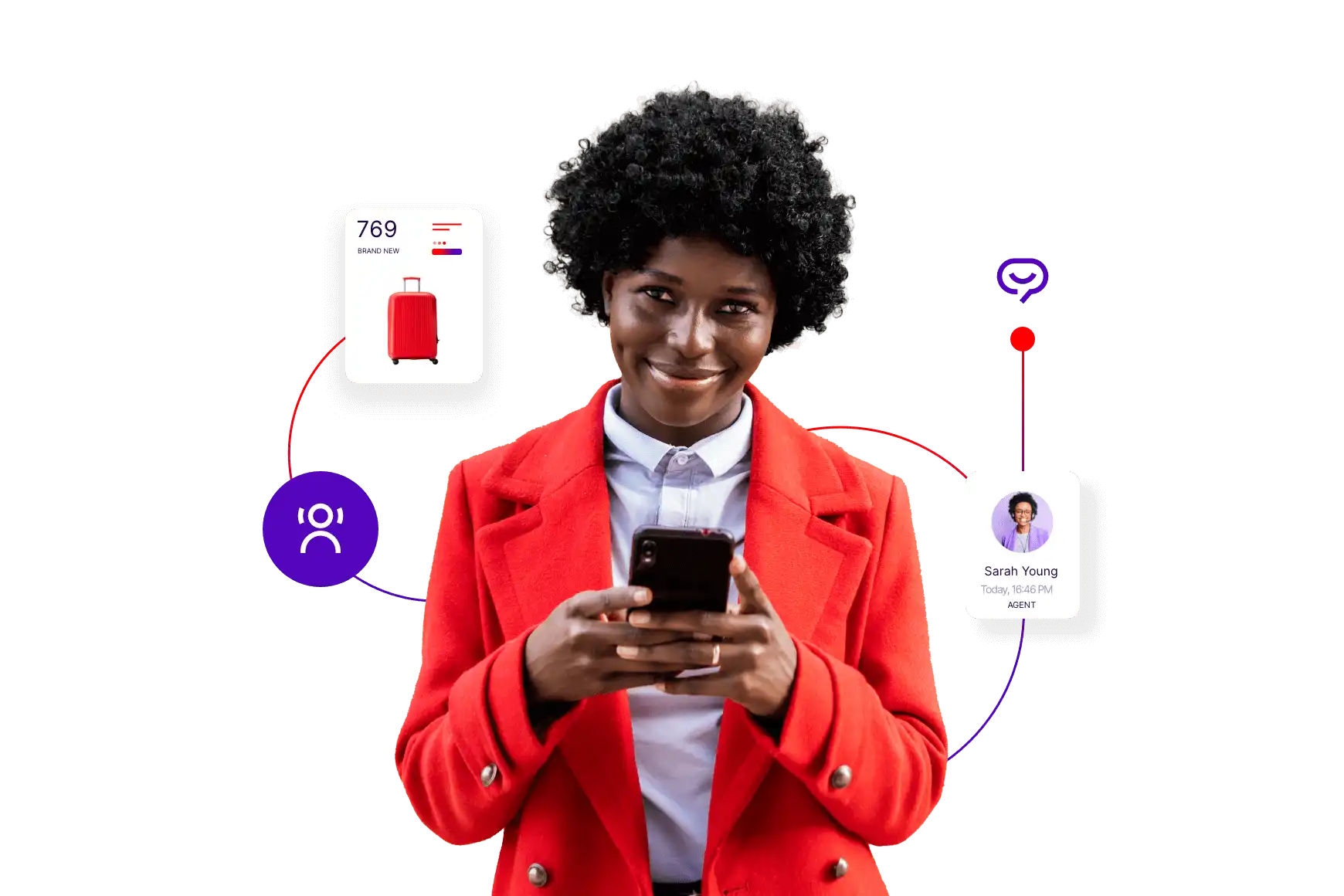Farfetch: How customer service helps craft luxury brand experiences

By Shannon Flanagan
0 min read
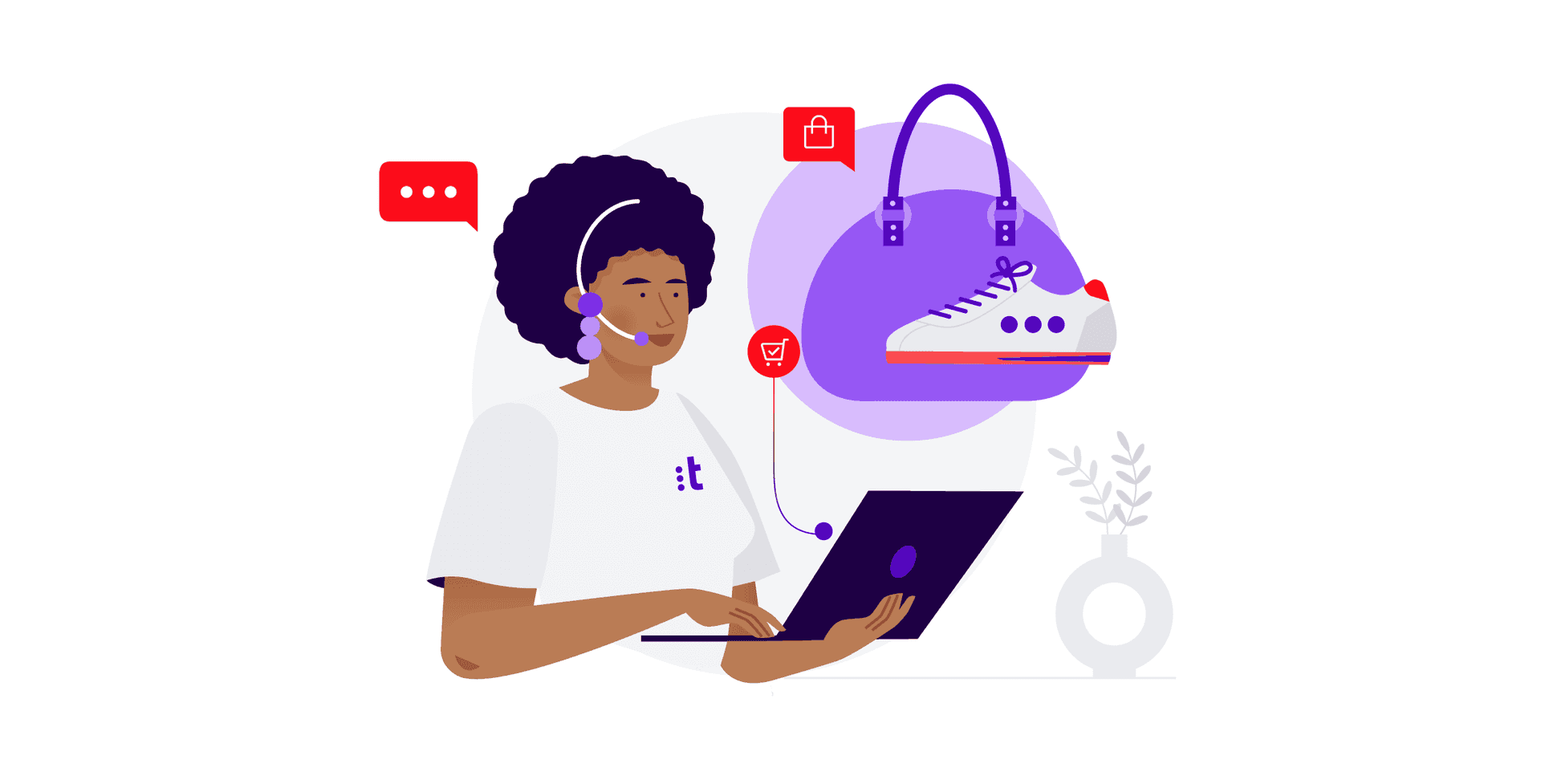
Customer service is all about finding the right solution for each individual customer and to be truly human in the process.
Farfetch is enabling the luxury fashion industry as a leading technology platform. They also work with partners to deliver great customer service.
In a recent session at Opentalk 2021, Shannon Colquhoun, Vice President of Global Industry Strategy: Retail, E-commerce & Consumer Goods at Talkdesk, and Patrícia Loureiro, Global Director of Customer Service at Farfetch, explored:
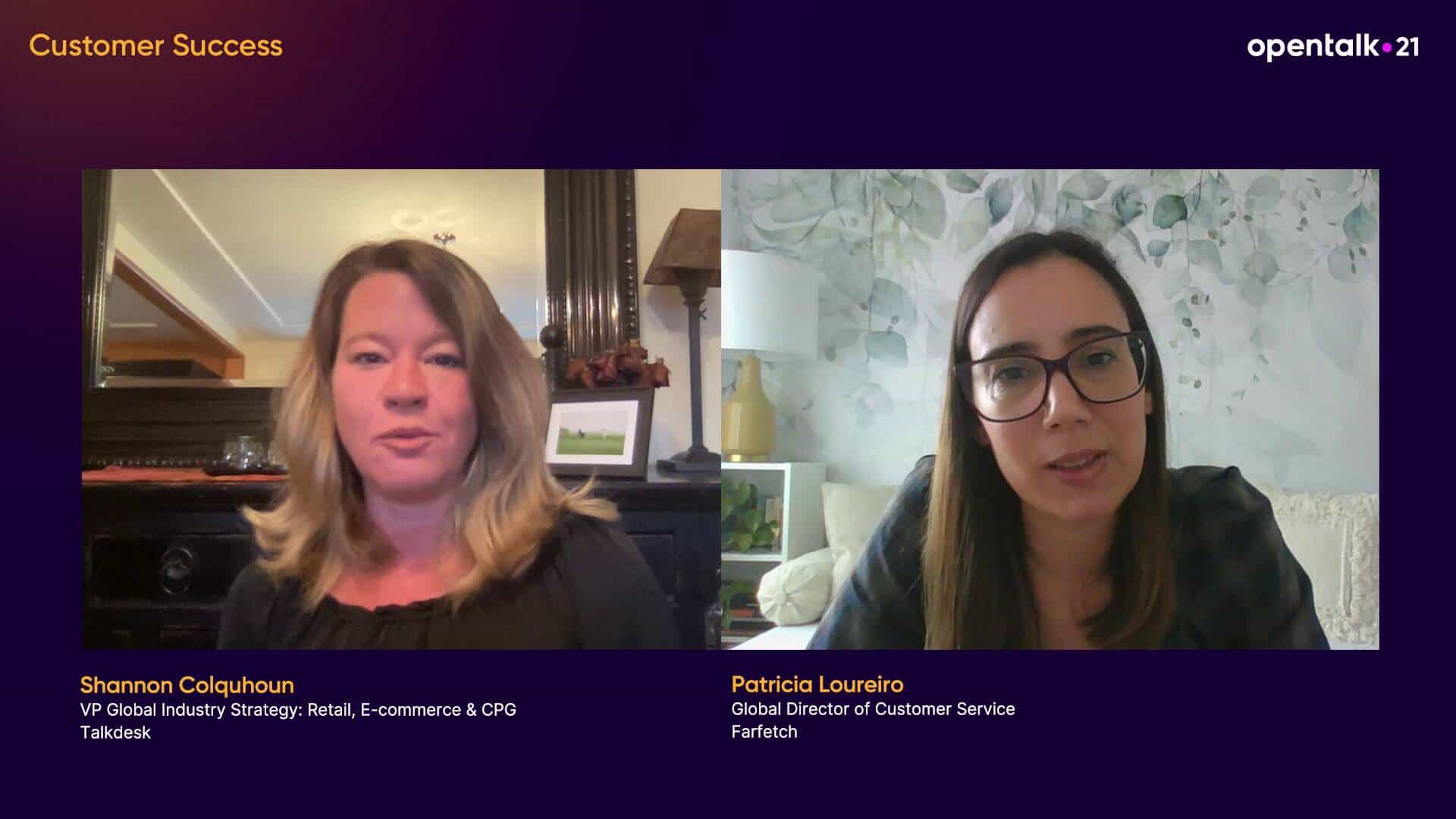
Watch Shannon introducing Patricia.
Shannon Colquhoun: Welcome everybody! My name is Shannon Colquhoun, I am the Vice President of Global Industry Strategy for Retail, E-commerce & Consumer Goods. I am really excited today to bring Patricia on the stage—she’ll introduce herself, I will not do it enough justice. But I want to say—as somebody who’s been in retail since college—there is no other person I want to run my customer care organization than her and I had the good fortune of spending many years at Lands’ End, which to me is one of the gold standards in what customer service looks like.
Farfetch has been a Talkdesk customer for the last few years, but she actually worked with Talkdesk way back in the day, even before then. She has been a great partner for us and I’ve had the pleasure of getting to know her over the last couple of months. And today we’re going to talk about the role of customer experience (CX) in the luxury space, how Farfetch services their clients, changes within the workforce, new channels and many more.
About Farfetch and their customer service team.
What is Farfetch?
Patricia Loureiro: Hi Shannon, thank you for having me. I was almost blushing during the introduction. Let me share a little bit about myself and a bit about my role at Farfetch. Farfetch is a global luxury platform—it’s really not a store, but a marketplace. We connect all of these wonderful brands and boutiques that have a large portfolio of luxury goods (mainly fashion) to customers all over the world. We ship from 120 countries to 180. It’s a massive operation that we do simply for love of fashion and revolutionary technology. Trying to marry two concepts which seem to be at different points in the spectrum: geeks and technology, and high fashion people. At Farfetch, most people have at least a little of each, which makes it a very exciting company.
What does customer service look like at Farfetch?
Patricia Loureiro: When it comes to my role at Farfetch, I’m the Global Director of Customer Service. We do customer service through several different channels depending on the market (it goes from WeChat, live chat, WhatsApp, email, and phone).
We do it out of eight places from seven countries, in 11 languages. It is a joy to belong to a company that is very customer centric, very fun, very conscious about people. Most of us, I think, would say that we’re very happy to work for Farfetch and very lucky. Also grateful for our lovely customers, will share a few stories on how wonderful they are.
Customer service—for us—is all about giving the level of care that customers would expect, going above and beyond that. I think it’s very important to have a CX Hub mission, as well as to amplify customers’ voices by making sure that the hundreds of people that listen to customers every day choose the bits that are important and amplify them to the rest of the company, so that it creates a movement to accelerate positive change and influence the customer experience related to services and new products, etc.
"Most people at Farfetch need to be connected to what customers feel and need, what they like, and what they don’t. I honestly believe that customer service needs to take up that challenge personally."
I. Tips to amplify the voice of your customers throughout your organization.
Watch Patricia talking about amplifying the voice of the customer.
What “advisors” are at Farfetch, and what tools they use to amplify the voice of their customers.
Note: Farfetch refers to what others might call a customer service representative or agent as an “advisor.”
Patricia Loureiro: Most people at Farfetch need to be connected to what customers feel and need, what they like, and what they don’t.
I honestly believe that customer service needs to take up that challenge personally.
Here’s a few things that we do:
- We do a lot of workshops with designers, technology, and product departments, in order to understand specific problems like returns or exchanges.
- We send people supervisors and advisors to these workshops.
- We collect a large number of cases and calls on a specific theme and we’ll share them with a broader team and tell them to listen to those calls in order to understand how painful it is for customers to return something in Germany or to exchange something in the US, etc.
- We then ask them to ponder on those cases and why they are worth solving—sometimes it’s about putting the right priority on things that we felt are important and that others haven’t prioritized.
How to share the voice of the customer throughout your organization and create feedback loops.
To get that experience far and wide, we also implemented a program called “Have you heard?”, which is a more polished version of all of this.
- We select a specific call, remove all confidential information, and create a video from it with relevant points (e.g., frequency of the case, length of resolution, customer satisfaction score).
- We show that video to a senior leader in a department related to the customer call. We then ask that senior leader a couple of questions and record their answers live about what they saw.
- The end result is a video training that anybody in Farfetch can take. And people love it.
Real-life examples:
Listen to this real-life story about hearing the customer.
“I’m done!”—A story about hearing the voice of the customer and learning from it.
I remember specifically one of the recordings, because the customer started the call with “I’m done!”. She got a wrong item, she sent it back, and later on had problems with the refund. She was really unlucky throughout the entire process. It was very heavy to hear her say she’s done.
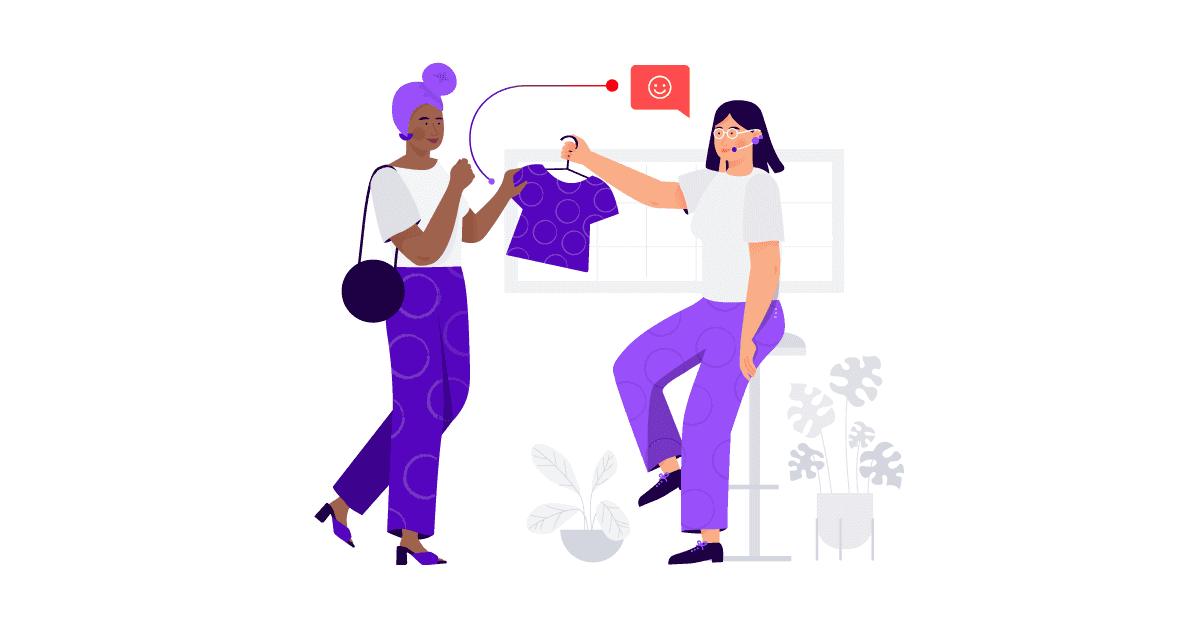
Vests: A story of advisors going through great lengths around sizing and fitting.
A customer was looking for a vest without knowing his size, and the advisor went to great lengths to instruct him on how to measure himself. It is funny to hear him try to measure himself with the advisor on the phone, on speaker. It was like a geometry class. It goes to show how important size and fitting are when shopping online; it’s much easier when you’re shopping in a store.
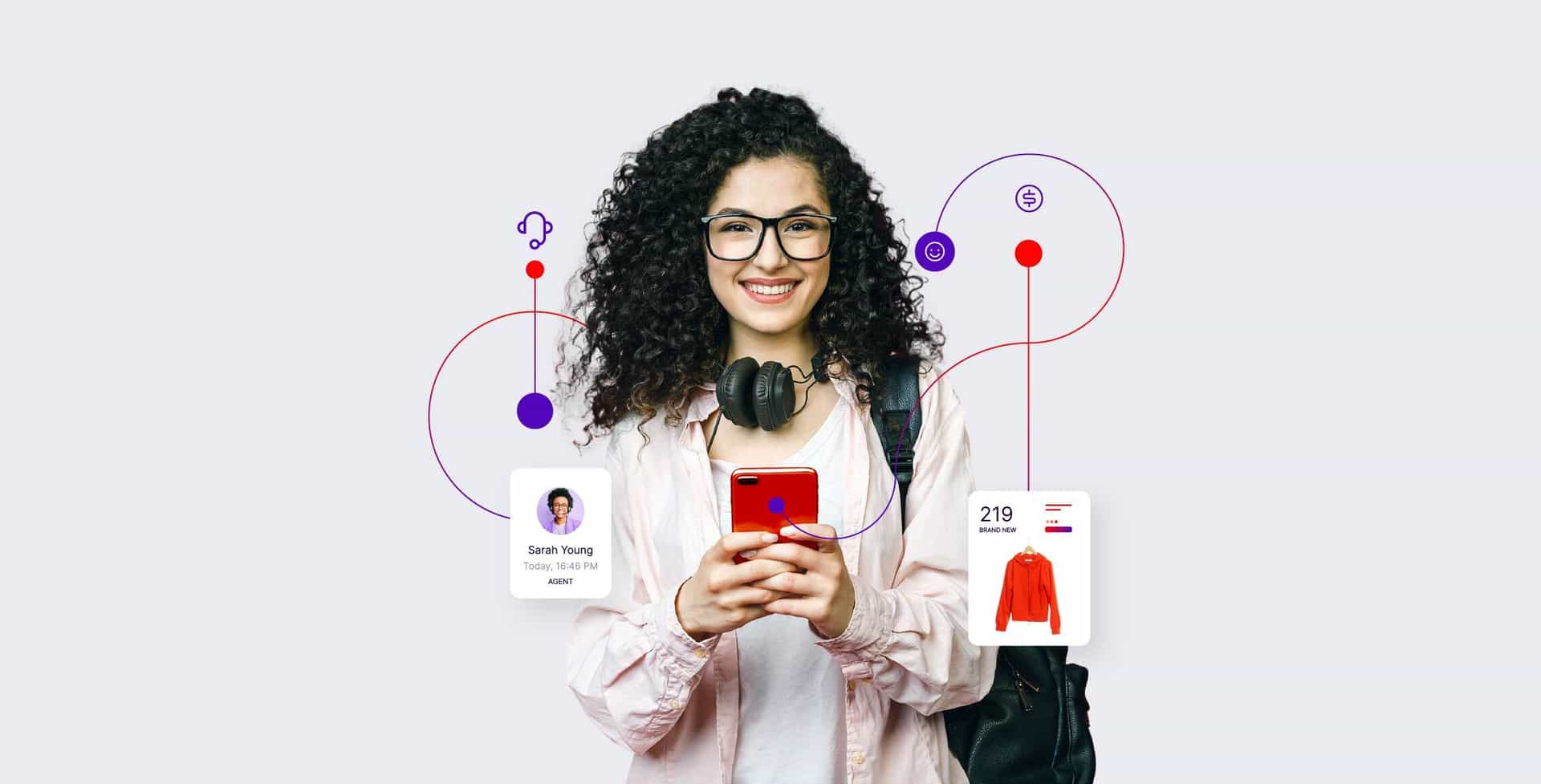
II. The role of new customer service channels, the “store”, and automation.
Customers are changing. So are customer service channels.
Patricia Loureiro: We see far more younger people shopping for luxury items, as well as more men. That shift in demographics does have an impact on the channels. There still are certain demographics or case categories in which people reach out for the phone. But mostly you see people keen on live chats, messenger, WhatsApp, and WeChat, platforms where there’s instant or almost instant messaging.
In one of our top markets, 80% of orders are done through the app, for example. The customers that we have are getting younger, they purchase mainly on the app, they are fast-paced professionals, they don’t have much time to interact. If they are shopping on the app, it makes sense that they prefer WhatsApp or a live chat session, it is a matter of convenience.
Watch Patricia talking about how Farfecth is planning the “new normal”.
How Farfetch removes the friction of the online shopping experience.
We know that COVID-19 has accelerated the shift to online, but we also know that it has created a “new normal”. Some people will go back to the stores without requiring the same sort of experience, because now they’ve had a taste for the good parts of online.
Farfetch is keen to create the ideal customer experience from online to offline and vice versa, and an essential part of it is empowering advisors to be helpful, either in the store or online.
How to seamlessly bridge the online and in-store experience.
If you’ve been browsing online and then you go into the store, it would be cool if the customer advisor in the store knows what has been on your favorite list lately, to pull it all out for you to try it on. But if you don’t want to try it on, then you have the whole mirror, which is a screen and you can do the virtual trial. You can also do it at home on your app or from your smartwatch.
A lot can be done to make that experience completely seamless. You could book your appointment, agree to go, and try something on in the store, while advisors complement that with a few other ideas. You go back to think about it then decide to shop online. All of that needs to be pre-integrated.
"We try to use sentiment analysis and learn what customers really feel about that specific category."
How Farfetch approaches self-service and automation in the contact center.
The interesting part of self-service is that companies have traditionally decided what goes to self-service based on volume drive. Here’s how we think about it at Farfetch: we also do that, and then we apply what we call “net emotional value”.
We try to use sentiment analysis and learn what customers really feel about that specific category. And if there is a high emotional value tied to that specific transaction, that case won’t go to self-service because we want to manage the emotion. Any chatbot or AI can manage a transaction, it’s the emotion that we want to manage. This is how we make those decisions which I think is different from the way I’ve seen other companies decide. It’s not volume alone, it’s a combination of volume with “net emotional value”.
What is low in terms of emotional value can be automated, if the customer wants to buy something fast, we make it simple, easy, effortless. Done! The other cases, even when the clients manage to purchase easily, if they still don’t feel right, then that’s something that you as a company shouldn’t allow to happen.
Real-life example:

Watch the customer service Cinderella story.
A story of a bride with Cinderella shoes: How customer service teams can go above and beyond.
I remember the story of a very beautiful bride in the Middle East, she had a pair of shoes covered in Swarovski crystals. She got these Cinderella shoes a week before her wedding, but two or three crystals we’re missing.
We didn’t have the time to deliver a new pair, because they were brought from the US, so we found a partner that had the same pair but a different size in the Middle East, we picked them up and sent them to that store. We actually bought that other pair, took the crystals out and glued them to the right pair.
This is what being creative about solutions means, you need to find the right solution for that customer, in that specific situation. A lot of people talk about standard operating procedures, but none of that prepares you for these sorts of moments.
"These are the only people in your company that talk to clients, if these people are not important I don’t know who is."
III. How to plan for the CX workforce of the future.
Listen about Farfetch customer service workforce.
How can retailers create the conditions to deliver great customer service? Why is the contact center a strategic asset for retailers?
Patricia Loureiro: When people tell me that customer service isn’t strategic, this is what I tell them: “These are the only people in your company that talk to clients, if these people are not important I don’t know who is”.
Customer service agents are your real brand ambassadors.
These are your real brand ambassadors. We talk about influencers and all of that, but in the end, the only people that talk—in their own voice or scripted—to customers and clients are those in the customer experience center. Making them feel important isn’t easy, I think it’s a stressful job.
How Farfetch sets up their advisors (customer service agents) for success.
Strategically, we don’t do outsourcing. Every one of our advisors are full fledged Farfetchers fit with the whole pack of benefits and everything. We make sure we give them a tech enablement that allows them to do their job really well. Enabling the Farfetch experience, everybody has Farfetch credit that they can use and that they can shop. We are keen for people to understand what it feels to be a customer of Farfetch.
How Farfetch protects mental health in the contact center.
We don’t put people on the phone the whole day. We alternate with offline cases for people to take a breather. Mental health is important. We do have a helpline, which is internal (managers and other people volunteer) and fully dedicated to the advisors, to take a moment between calls if they need to take a breather and vent.
To be very good at your job, as an advisor, one needs to connect emotionally to the customer. And sometimes that can feel heavy; especially during the last year. People have been stressed and anxious, and pretty lonely as well. That is a lot. For advisors to be wonderful on each call, they need to reset. That’s what the helpline is for, to take away all of the emotion from the last customer to the next.
How Farfetch is digitizing their stores while empowering advisors and in-store associates.
We are very interested in the move back to the physical, but we also see a lot of partners who own physical stores and are very interested in the move to the digital, on how we can digitize their stores.
In terms of tools, it is very much about empowering advisors, be it in the stores or in the CX Hub. They need to be relevant for the customer, because customers want to do everything by themselves, but they also value someone who’s relevant to them in terms of advice or ways to solve a problem creatively.
Real-life example:

Watch this story about shoes and finding true love.
Shoes and finding love: A story about contact center agents being human, empathetic, and vulnerable.
I remember this call from a lovely customer, I think, from Russia. She was second-guessing herself about a pair of shoes: “are these age appropriate?”.
The agent was answering this question, and at some point the customer explained that her doubts were in fact around whether or not at her age she can still find true love, get married, and start a family.
The advisor went from having a conversation around fashion choices to shared life expectations. The advisor was present and human by embracing her own vulnerability. I think it’s very important for us to give them that space.
Customer service comes down to this: Finding the right solution for each individual customer and to be truly human in the process.
Watch about customer service making a difference in people’s life.
We’ll close with this story:
Loafers: A story of humanity and feet.
A few weeks ago we had this amazing customer from Virginia call us. She was looking for a pair of Ferragamo loafers for her daughter who is disabled (one of her feet was larger than the other one). She wanted to know if she could buy the two pairs and to return the unmatched shoes, one size each.
At Farfetch, with our marketplace, that would have been impossible. The two pairs could have come from different partners. The advisor couldn’t say no and looked for ways to solve the case. He involved the partner, he called me, and we decided to buy the two pairs of shoes, to refund one pair while the customer actually keeps all of them.
We felt that it was a moment to be human, this is what we mean by empathy. Both the advisor and his supervisor called me in tears, because they empathized as parents.
This is something that we are expected to do, encouraged to find the right solution for each individual customer and to be truly human in the process.
Learn more at www.talkdesk.com/retail.
